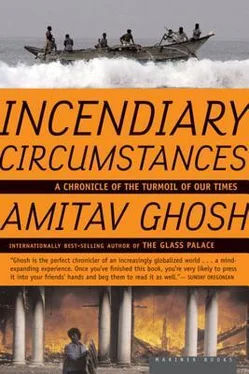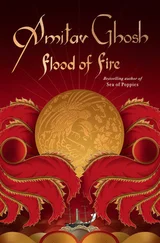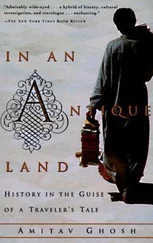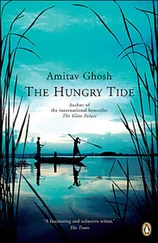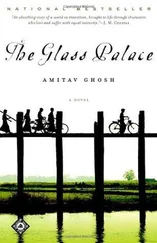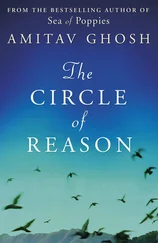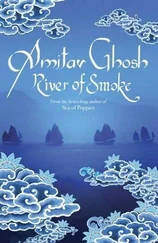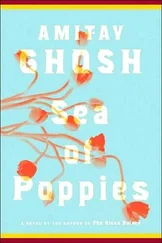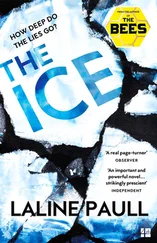But in the late 1970s several international mountaineering expeditions ventured into this region. They came through Pakistan and used Pakistani-controlled areas as their trailheads. This raised suspicions in India. It was discovered that maps were being published with lines drawn through the region, suggesting delineated borders where none existed. There was talk of "cartographic aggression."
It was these notional lines, on maps used by mountaineers, that transformed the Siachen Glacier into a battleground. It is generally agreed that the glacier, an immense mass of compacted snow and ice, seventy miles long and more than a mile deep, has no strategic, military, or economic value whatsoever.
In 1984 the Indian Army launched a large-scale airlifting operation and set up a number of military posts. Pakistan responded by putting up a parallel line of posts. There was no agreement on where the posts should be: shoving was the only way to decide. Since that time the Indian and Pakistani armies have regularly exchanged artillery fire at heights that range from 10,000 to 20,000 feet.
On the glacier we stopped to visit a dimly lighted hospital ward. There were a dozen men inside. None of them had been injured by "enemy action": their adversary was the terrain. They were plainsmen, mainly. In the normal course of things, snow would play no part in their lives. Most of the men were in their late thirties or early forties — family men. They stared at us mutely. One had tears in his eyes.
Every year a thousand soldiers are injured on the glacier — about the equivalent of an infantry battalion. "We allow at least ten extra men per battalion for wastage," an officer told me.
At some posts on the glacier, temperatures routinely dip to 40 degrees below zero. At these altitudes, wind velocities are very high. The soldiers spend much of their time crammed inside tents that are pitched on the surface of the glacier or on ledges of rock. Such heat as they have comes from small kerosene stoves, which produce a foul-smelling, grimy kind of soot. The soot works itself slowly into the soldiers' clothes, their hair, their eyes, their nostrils. When they return to base camp after a three-month tour of duty, they are enveloped in black grime.
The Siachen Glacier costs India, I was told, $2 million a day. The total cost of defending this mass of ice is beyond estimate, but it certainly exceeds several billion dollars.
In the evening I ate with a group of junior officers. I was interested to note that Indian soldiers always spoke of their Pakistani counterparts with detachment and respect. "Most of us here are from North India," a blunt-spoken major said to me. "We have more in common with the Pakistanis, if you don't mind my saying so, than we do with South Indians or Bengalis."
The next morning, in a Cheetah helicopter, I followed Fernandes through the gorges that lead up to the glacier. It was cloudy, and the brilliant colors of the rock faces had the blurred quality of a water-washed print. There was a majesty to the landscape that I had never seen before.
On our return, we drove to the snout of the glacier. A bara khana —a kind of feast — had been arranged under an open hangar, in Fernandes's honor. Fernandes left the officers' table and began to serve the other ranks, taking the dishes out of the hands of the kitchen staff. The men were visibly moved, and so was Fernandes. It was clear that in this job — arrived at fortuitously, late in his career — Fernandes had discovered some kind of vocation, a return, perhaps, to the austerity and brotherhood of his days as a seminarian or a trade unionist.
I was introduced to an officer who had just returned from three months on the glacier. He was proud of his men and all they had accomplished: they had dug caves in the ice for shelter, injuries had been kept to a minimum, no one had gone mad. He leaned closer. While on the glacier, he said, he'd thought of a plan for winning the war. He wanted to convey it to the defense minister. Could I help?
And the plan? I asked.
A thermonuclear explosion at the bottom of the glacier, a mile deep. The whole thing would melt, he explained, and the resulting flood would carry Pakistan away and put an end to the glacier as well. "We can work wonders."
He'd just come off the glacier, I reminded myself. This was just another kind of altitude sickness.
The next day, sitting in the air force plane, I talked to Fernandes about Pakistan. "Isn't it possible for both sides to disengage from the glacier?" I asked. "Can't some sort of solution be worked out?"
"Does anyone really want a solution?" he said quietly. "Things will just go on like this." In his voice there was a note of despair.
I came to be haunted by an image of two desperately poor protagonists balancing upon a barren mountaintop, each with a pickax stuck in the other's neck, each propping the other up, waiting to bleed to death.
In Leh, late one night in an empty dining room, Fernandes made the cryptic comment, "There are no Indians left."
"What do you mean?"
"There are no Indian parties today. There are only groups gathered around individuals."
He was referring to the powerful sectional and regional interests that have prevented any stable government from forming, precipitating the several elections in quick succession.
I asked him about his alliance with the BJP. "You were always a secular politician," I said. "How did you come to link yourself to a religious party?"
Fernandes spoke of an old political mentor who had urged him to maintain a dialogue with every segment of the political spectrum. He spoke of a bitter feud with a former protégé, Laloo Yadav, a powerful Bihar politician. Then, suddenly, he cut himself off. "Look," he said, "I'm rationalizing."
He had gone to the BJP as a last resort, he explained. He had tried to reach agreements with various secular left-wing parties. He tried many doors, he said, and "only when all other doors were closed" did he go to the BJP.
The causes of Fernandes's despondency were suddenly clear. He had spent a lifetime in politics, and the system had spun him around and around until what he did and what he believed no longer had the remotest connection. I knew that he still possessed a certain kind of idealism and personal integrity. But what had prevailed finally was vanity — the sheer vanity of power.
Fernandes is not alone. This sense of deadlock is an essential part of the background of the nuclear tests of May 11. To the leaders of the BJP, hanging on to power by the goodwill of a tenuous coalition, the tests must have appeared as one means of blasting a way out of a dead end. But if the BJP bears the principal responsibility for the tests, the blame is not its alone: it was Indira Gandhi and her Congress Party who set the precedent for using nuclear technology as political spectacle. Since then, many other Indian politicians have battled with the same temptation. Two other recent prime ministers, Narasimha Rao and I. K. Gujral, resisted, to their great credit, but they both came very close to succumbing. In the end, it is in the technology itself that the real danger lies. As long as a nuclear establishment exists, it will always tempt a politician desperate to keep a hold on power.
That night in Leh, I thought of something Fernandes had said to me earlier: "Someday we will sink, and this is not anything to do with China or with Pakistan. It is because this country is cursed to put up with a leadership that has chosen to sell it for their own personal aggrandizement." This seemed now like an unconscious self-indictment.
There are, in fact, many reasons to fear nuclear catastrophe in South Asia.
Both India and Pakistan have ballistic missiles. Their nuclear warheads will necessarily be produced in only a few facilities, because of limited resources. India's nuclear weapons, for instance, are thought to be produced at a single unit: the Bhabha Atomic Research Center, in Bombay. Both sides are therefore realistically able to destroy each other's production capacities with not much more than a single strike.
Читать дальше
